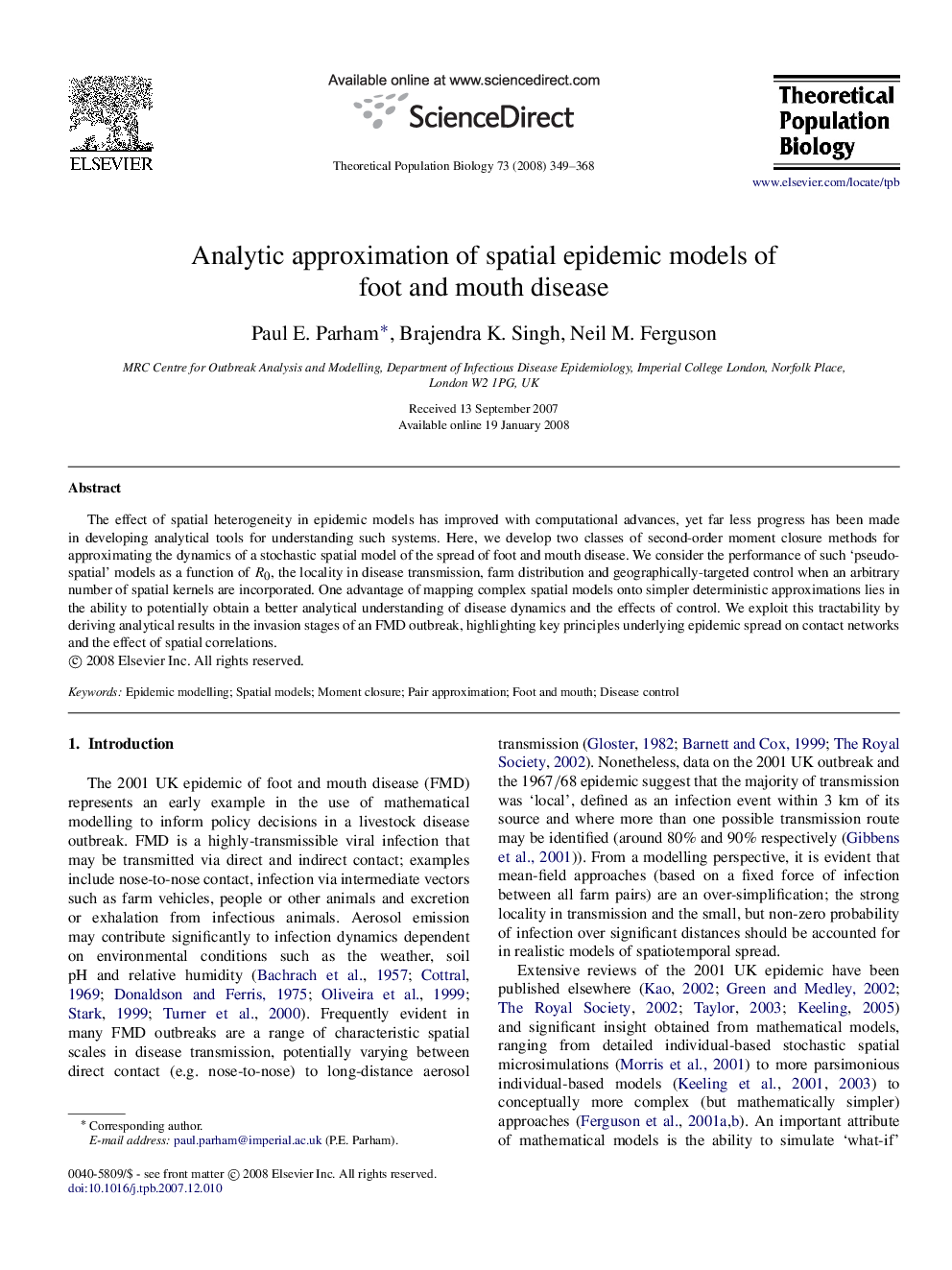| Article ID | Journal | Published Year | Pages | File Type |
|---|---|---|---|---|
| 4502614 | Theoretical Population Biology | 2008 | 20 Pages |
The effect of spatial heterogeneity in epidemic models has improved with computational advances, yet far less progress has been made in developing analytical tools for understanding such systems. Here, we develop two classes of second-order moment closure methods for approximating the dynamics of a stochastic spatial model of the spread of foot and mouth disease. We consider the performance of such ‘pseudo-spatial’ models as a function of R0R0, the locality in disease transmission, farm distribution and geographically-targeted control when an arbitrary number of spatial kernels are incorporated. One advantage of mapping complex spatial models onto simpler deterministic approximations lies in the ability to potentially obtain a better analytical understanding of disease dynamics and the effects of control. We exploit this tractability by deriving analytical results in the invasion stages of an FMD outbreak, highlighting key principles underlying epidemic spread on contact networks and the effect of spatial correlations.
